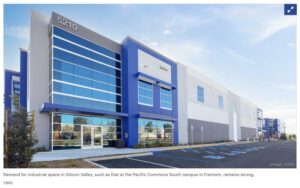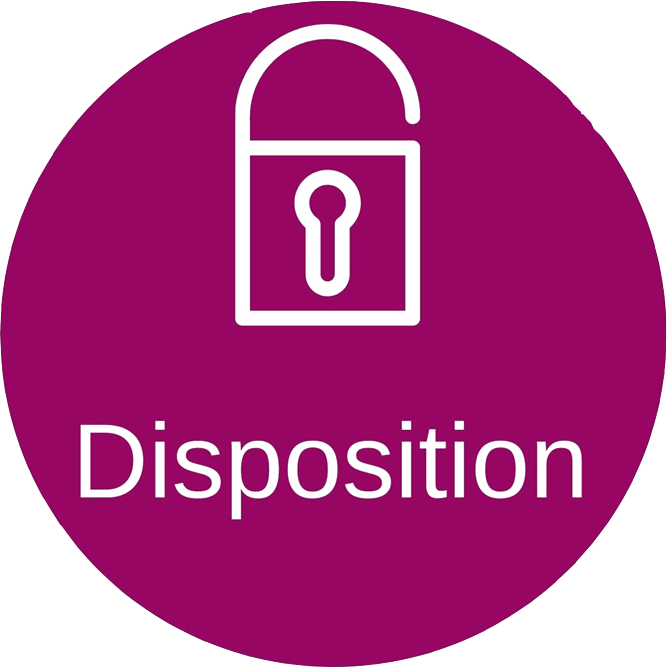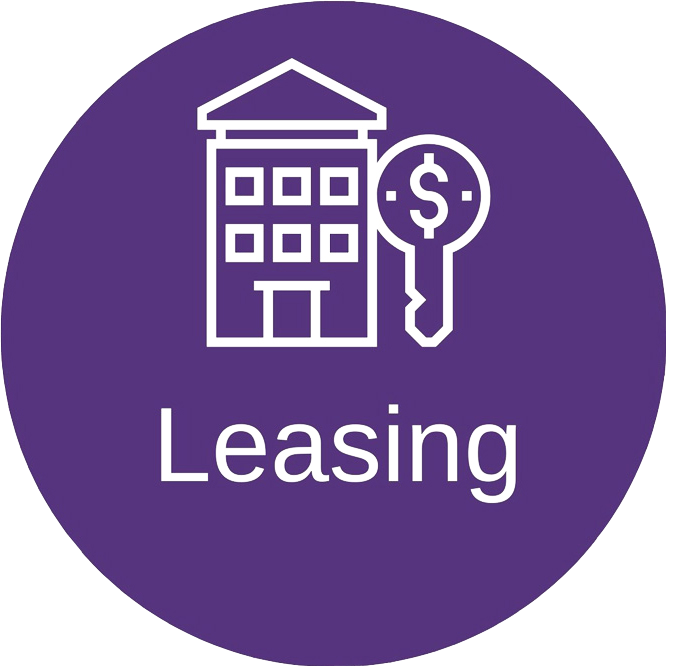
Silicon Valley’s commercial real estate sector’s three major segments could be described as the good, the bad and the somewhere in between.
The industrial portion is doing well, with strong demand and a vacancy rate of less than 3%, according to the latest data from real estate brokerage CBRE. As has been well reported, the office piece is doing poorly, with vacancy rates skyrocketing to near 20%.
And then there’s the market for research-and-development space, which seems to be pulled in both directions. Vacancies have been rising lately, though remain well below those for office space. And there remains demand, albeit for particular kinds of R&D spaces — single-story ones that resemble industrial spaces because of their ample amounts of available electrical power, CBRE said in a research note Friday. Demand for such spaces is being driven by the needs of new kinds of technology companies, Matt Taylor, an executive vice president at CBRE, told the Business Journal.
“New innovations in artificial intelligence and autonomous vehicle/battery technology have resulted in an increase in demand for R&D and industrial (properties), especially those with existing power and manufacturing infrastructure,” Taylor said.
Still, there’s plenty to be concerned about in the R&D market. The vacancy rate for such space rose from 9.9% in the second quarter to 10.7% in the third, the highest it’s been since 2014, according to CBRE. On net, 1.18 million more square feet of space became vacant in the quarter than became occupied, a figure known as net absorption. That was the fifth quarter in a row that the amount of R&D space vacated in Silicon Valley outpaced the amount occupied and represented the worst net absorption result in any three-month period since the first quarter of 2021.
Meanwhile, prospective tenants were collectively shopping for 5.1 million square feet of combined office and R&D space at the end of the third quarter, down from about 5.5 million at the end of the second quarter and well below the 10-year quarterly average of about 8 million square feet.
Despite the tepid demand, average asking rents rose by 5 cents a square foot from the second to the third quarter to $2.97 a foot.
The Mountain View-Los Altos submarket had the highest R&D vacancy rate at 14.4%. But the rate was 13% or higher in Palo Alto, Santa Clara and Milpitas. Downtown San Jose had the lowest vacancy rate in Silicon Valley at 4.4%.
Including space available for sublease, North San Jose had the highest availability rate at 16.9%, followed by Palo Alto at 15.8% and Mountain View-Los Altos at 15.2%. Downtown San Jose had the lowest availability rate at 4.8%.
Industrial stays strong
By contrast to what’s happening in the R&D market, the industrial sector remains relatively strong. The overall vacancy rate in Silicon Valley for industrial space was 2.4% in the third quarter, unchanged from the second, according to CBRE.
Helping to keep vacancies down is that the market is supply constrained due to a lack of available sites to develop new industrial space, challenges in securing permits to develop such space and rising interest rates that make new construction more expensive, said Chip Sutherland, a vice chairman at CBRE.
Roughly 57% of all the industrial leases signed in Silicon Valley during the third quarter were new leases, according to CBRE. Newer spaces with amped up electrical power and modern fire suppression systems attracted the most attention from prospective tenants, CBRE said in its report on the industrial sector.
Thanks to the limited amount of available space, particularly that with the latest features, the average monthly asking rents rose to $1.63 a square foot in the quarter, up 16 cents a foot year-over-year and 5 cents a foot from the second quarter.
Although the sector remains strong, the amount of industrial space vacated in the quarter outpaced the amount occupied by 5,500 square feet, according to CBRE.
In the region, the vacancy rate for such space was highest in Palo Alto at 5.4%, followed by South San Jose at 4.2%. The lowest rate was in Milpitas at 1.2%. North San Jose and Sunnyvale each stood at 1.3%.
The Fremont-Newark area, which has 37 million square feet of industrial space, more than double the amount of second place Santa Clara, had a vacancy rate of 1.9%.
Fremont-Newark, North San Jose, South San Jose, Sunnyvale and Mountain View-Los Altos each saw more industrial space occupied than vacated in the third quarter.
In August, CBRE helped lease the last unoccupied industrial building at the newly completed Pacific Commons South business park in Fremont to a Chinese automotive equipment manufacturer. Later that month, an industrial campus nearby, known as the Clipper Court Commerce Center, changed hands for $103.5 million.
Meanwhile, Downtown San Jose and Santa Clara each saw more space vacated than occupied in the just-completed quarter, to the tune of more than 85,000 square feet each, on net.




